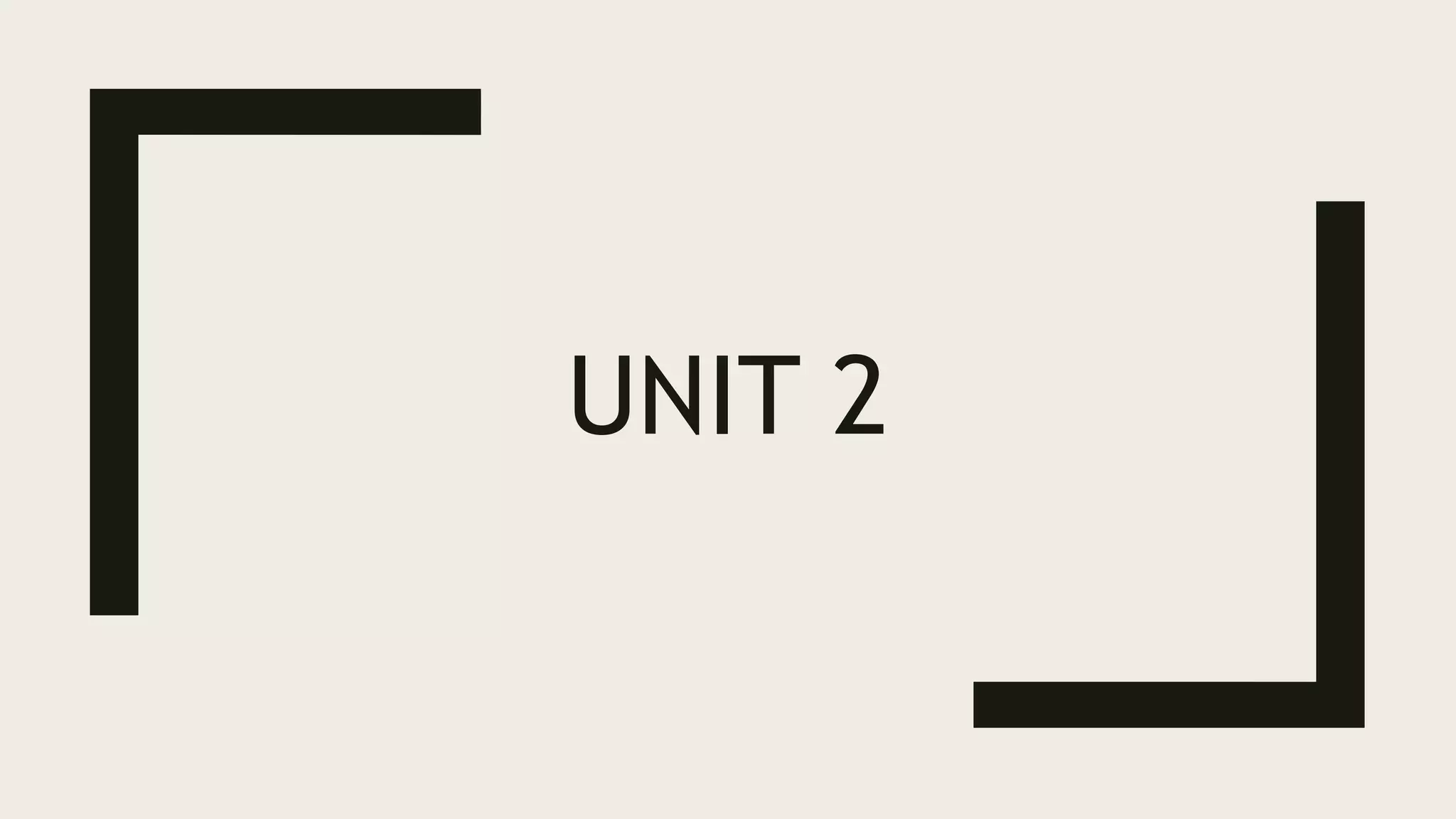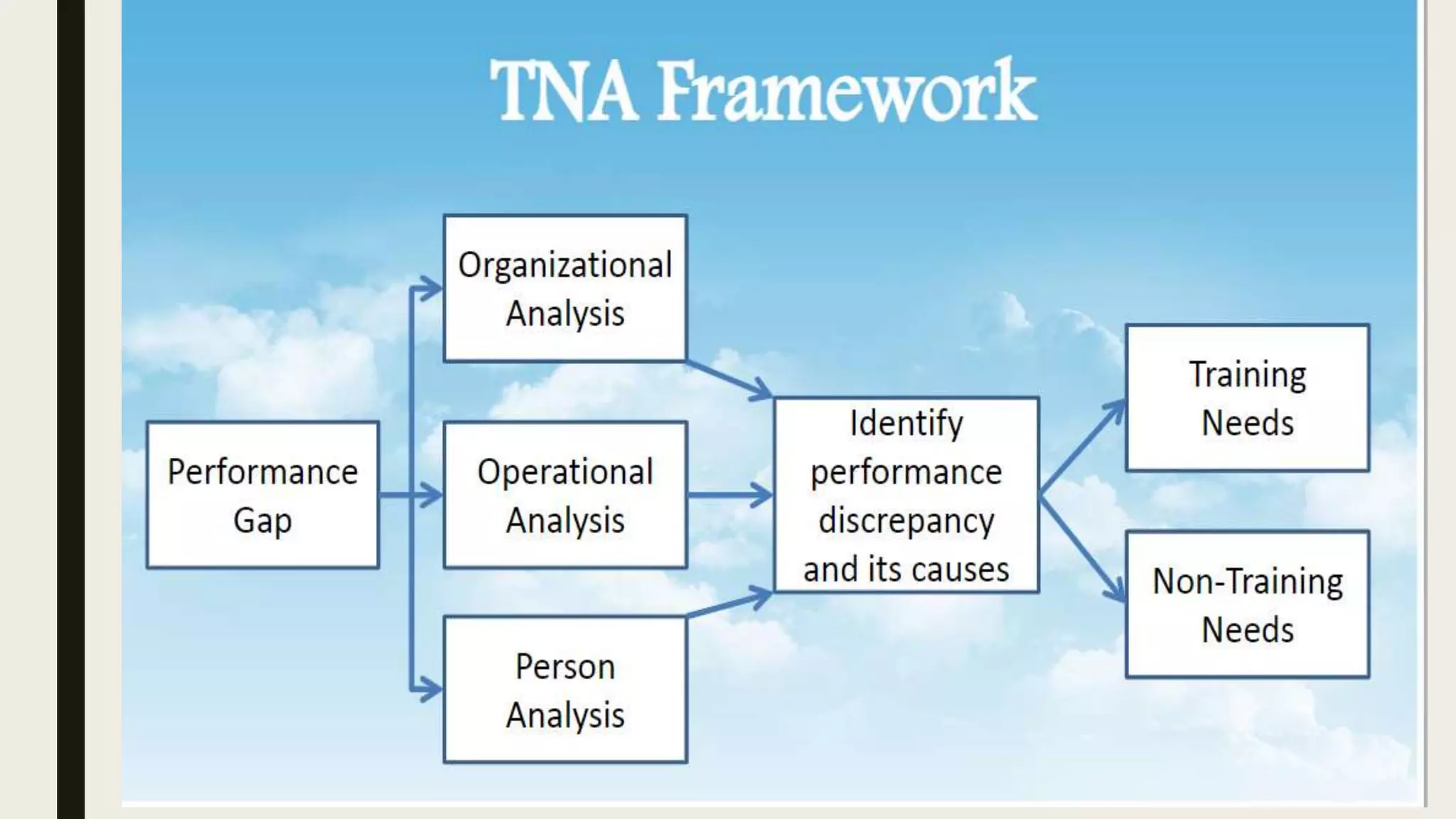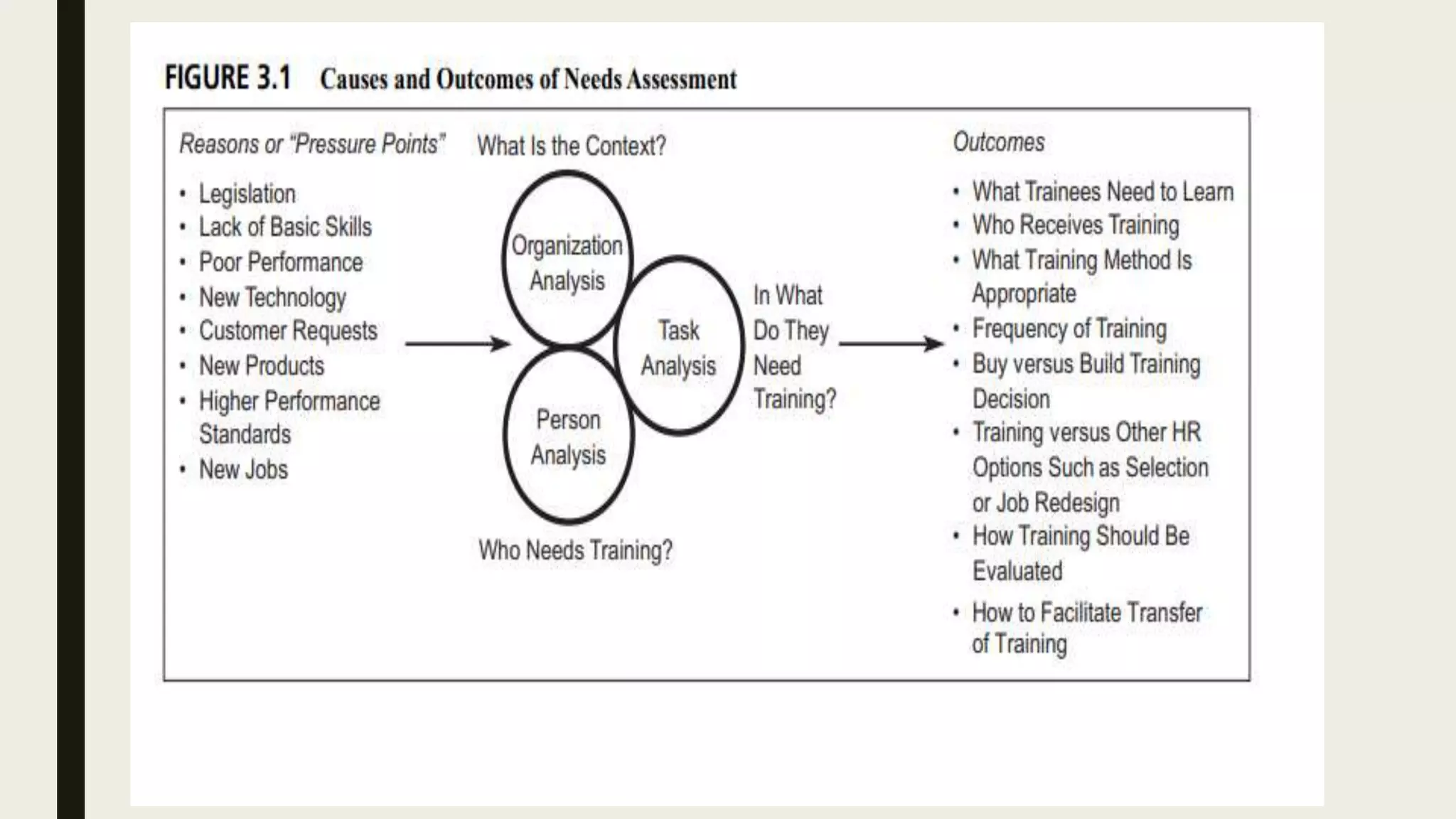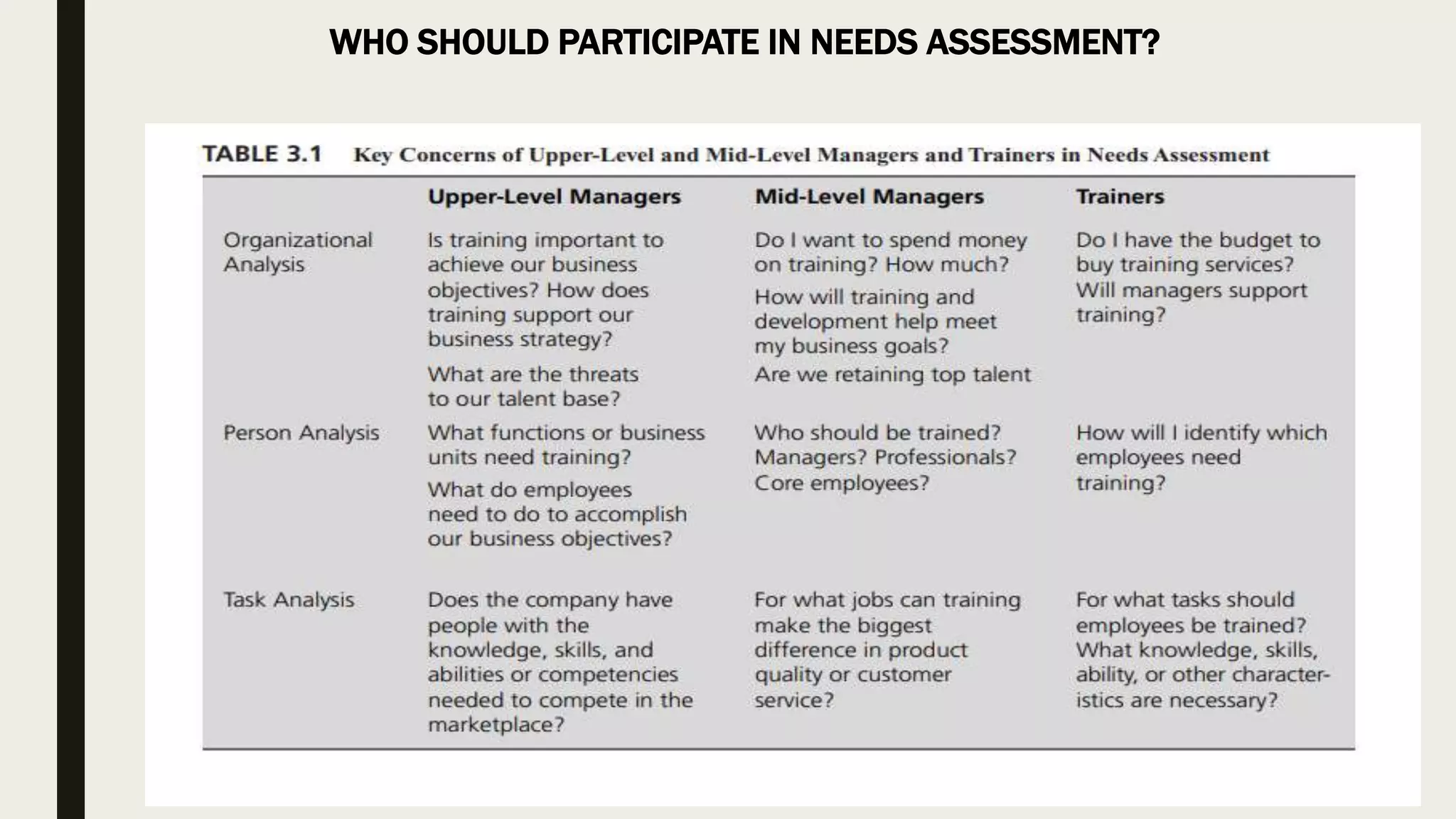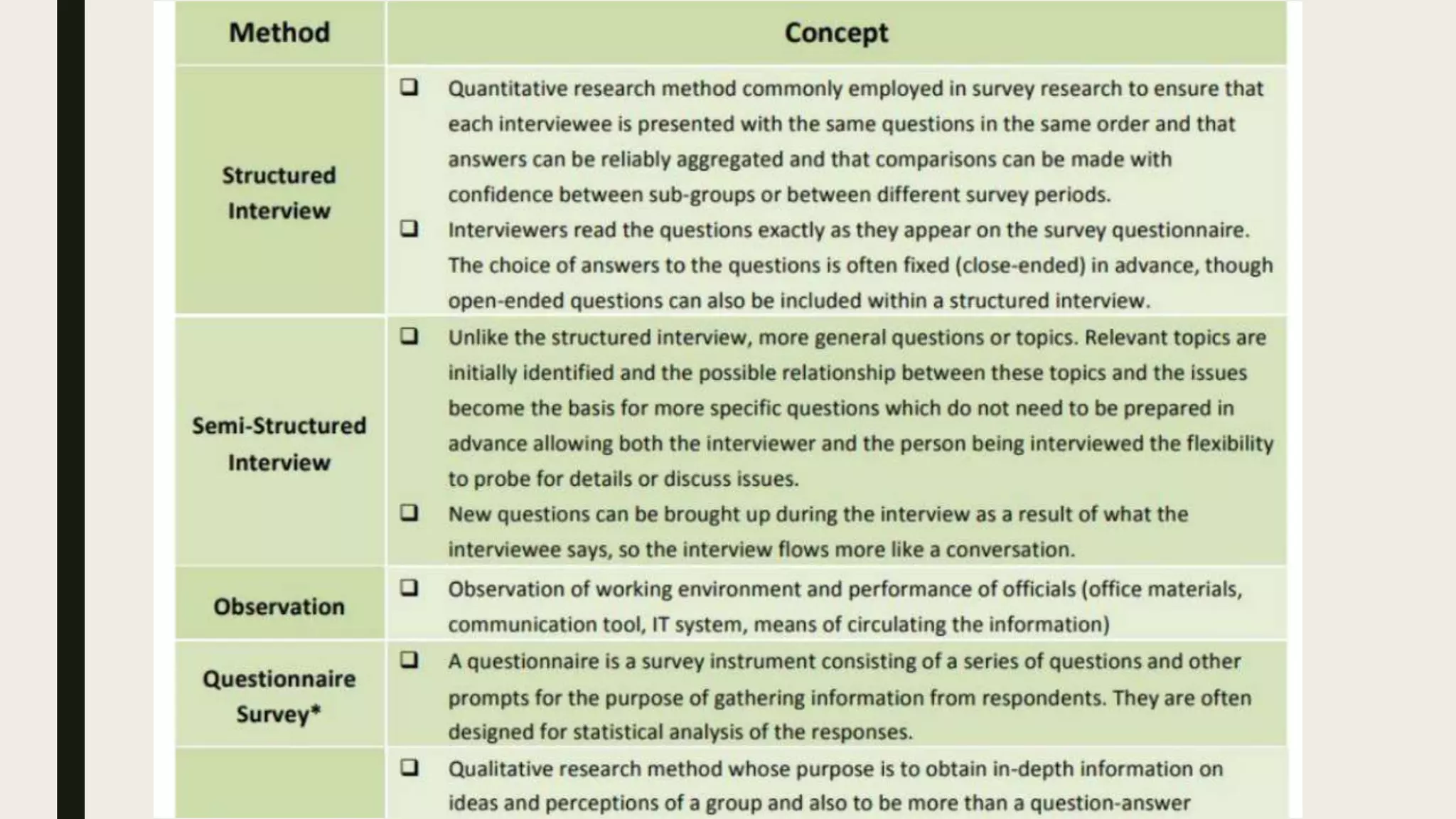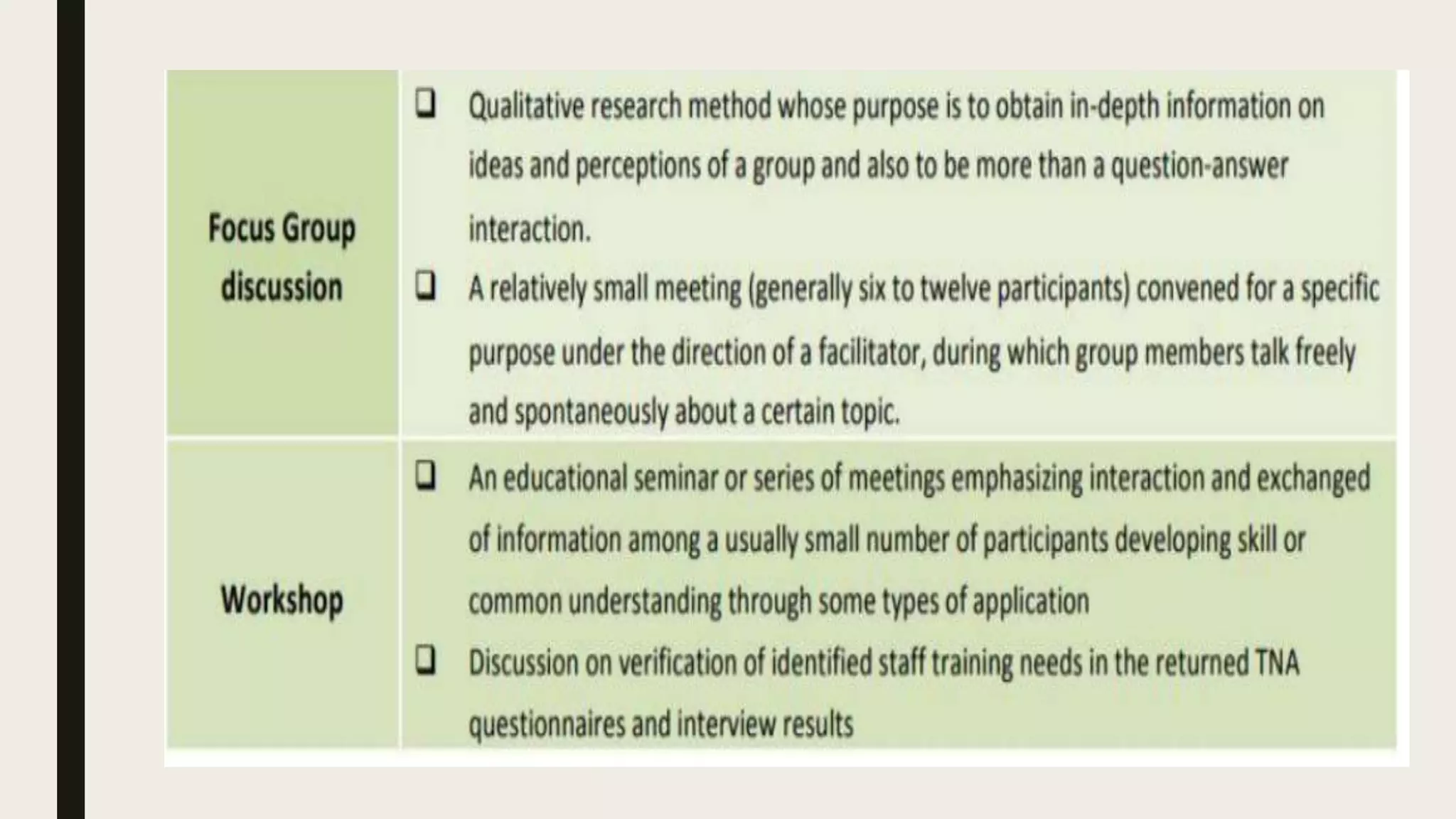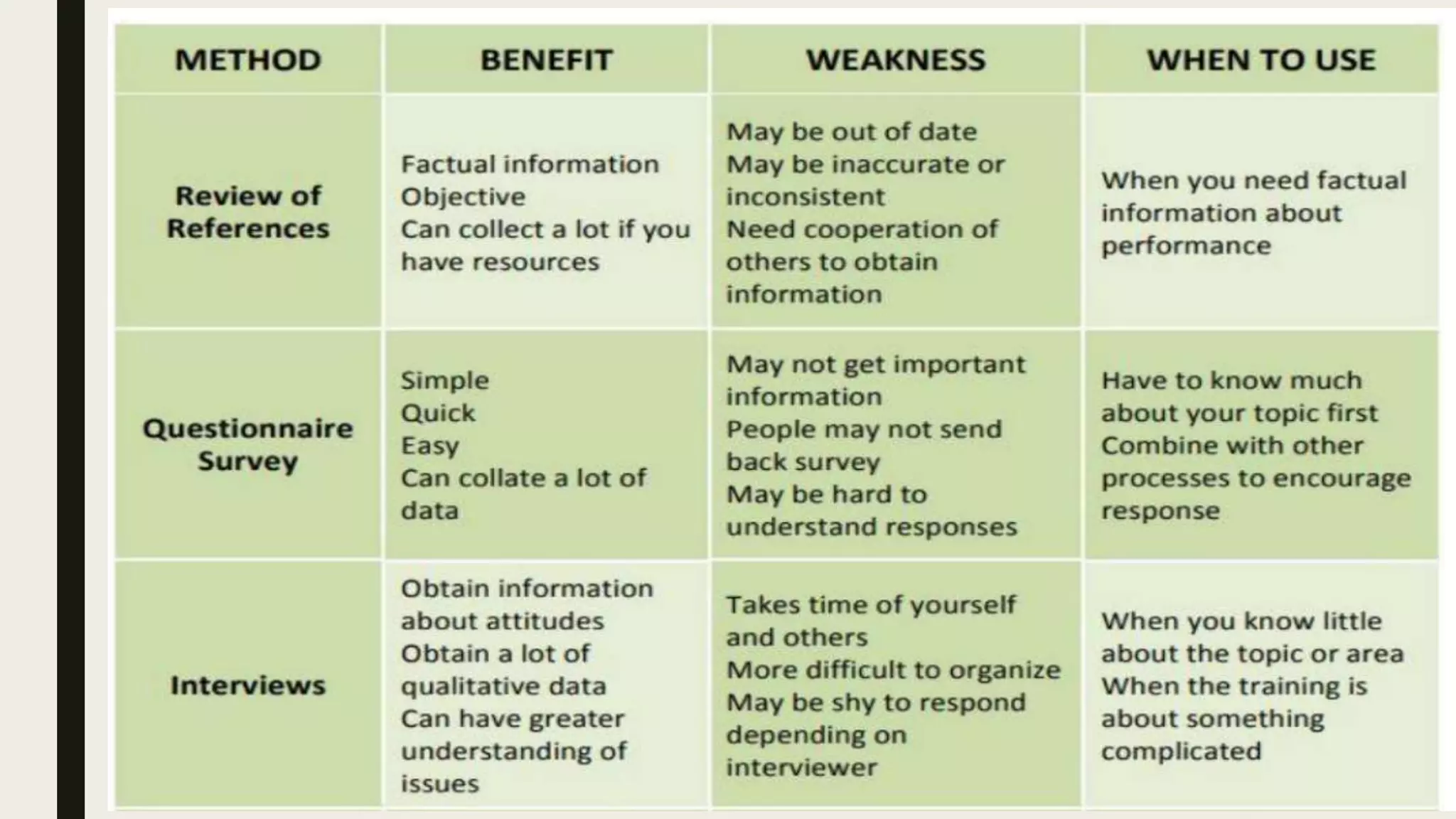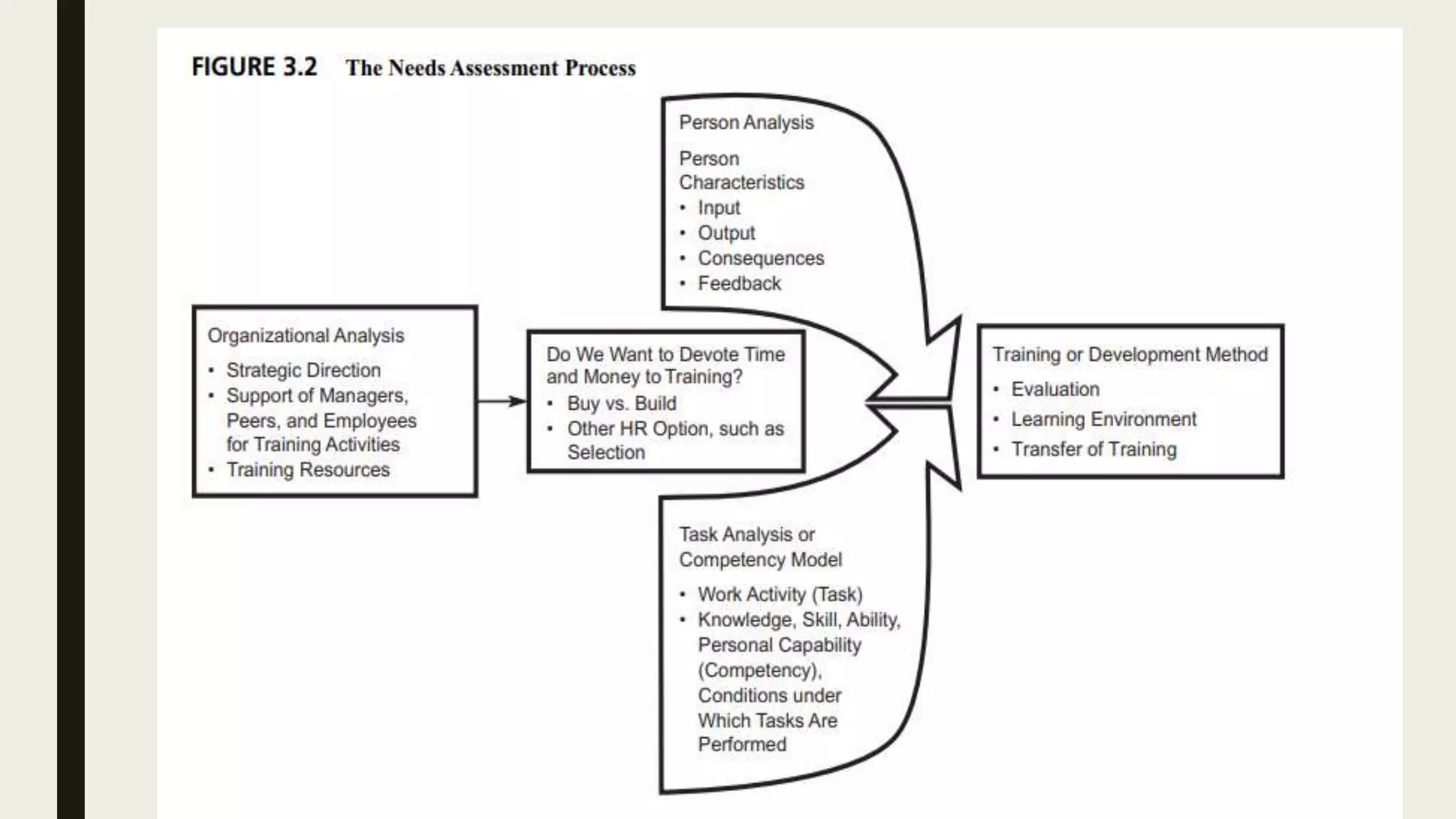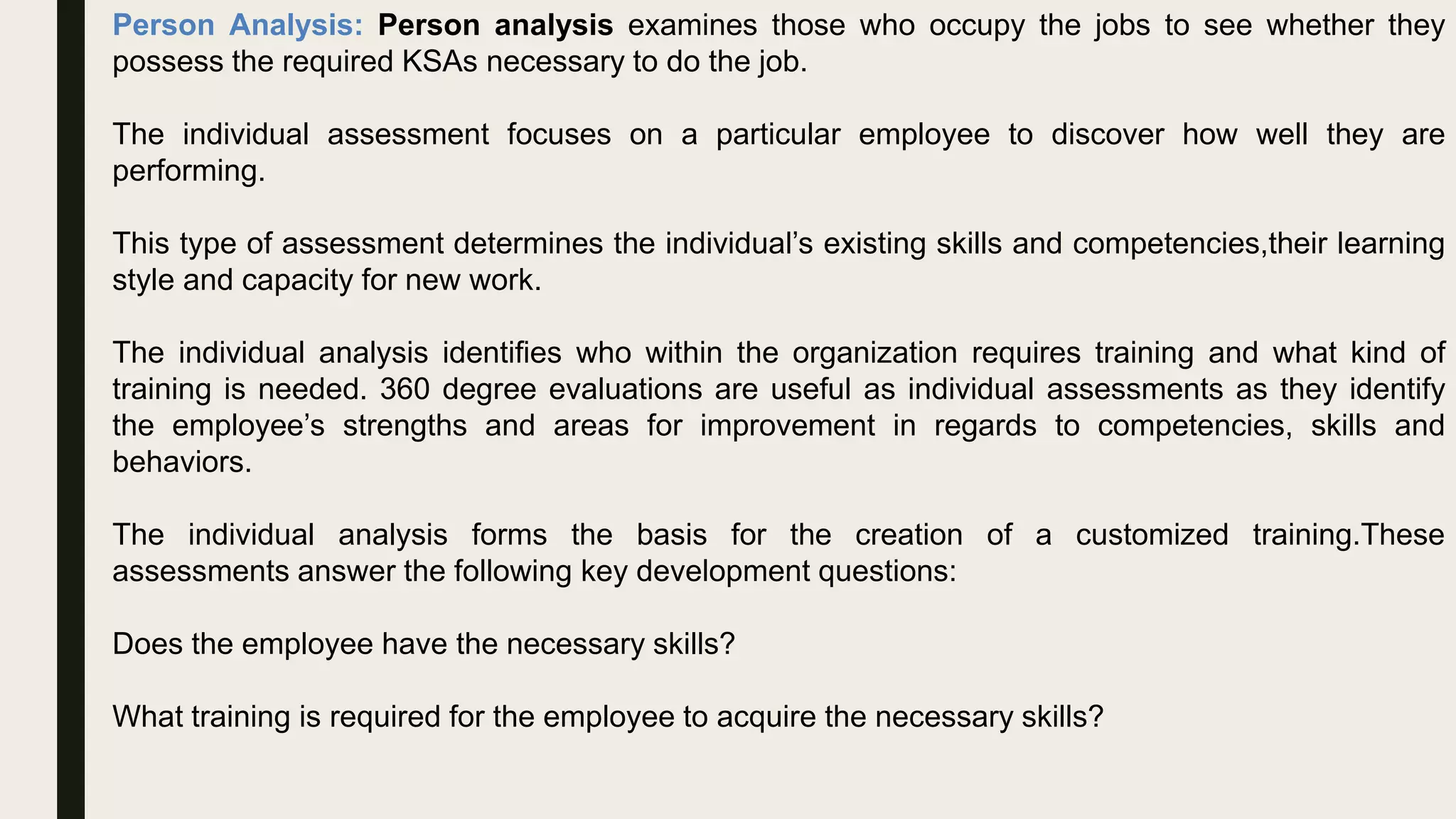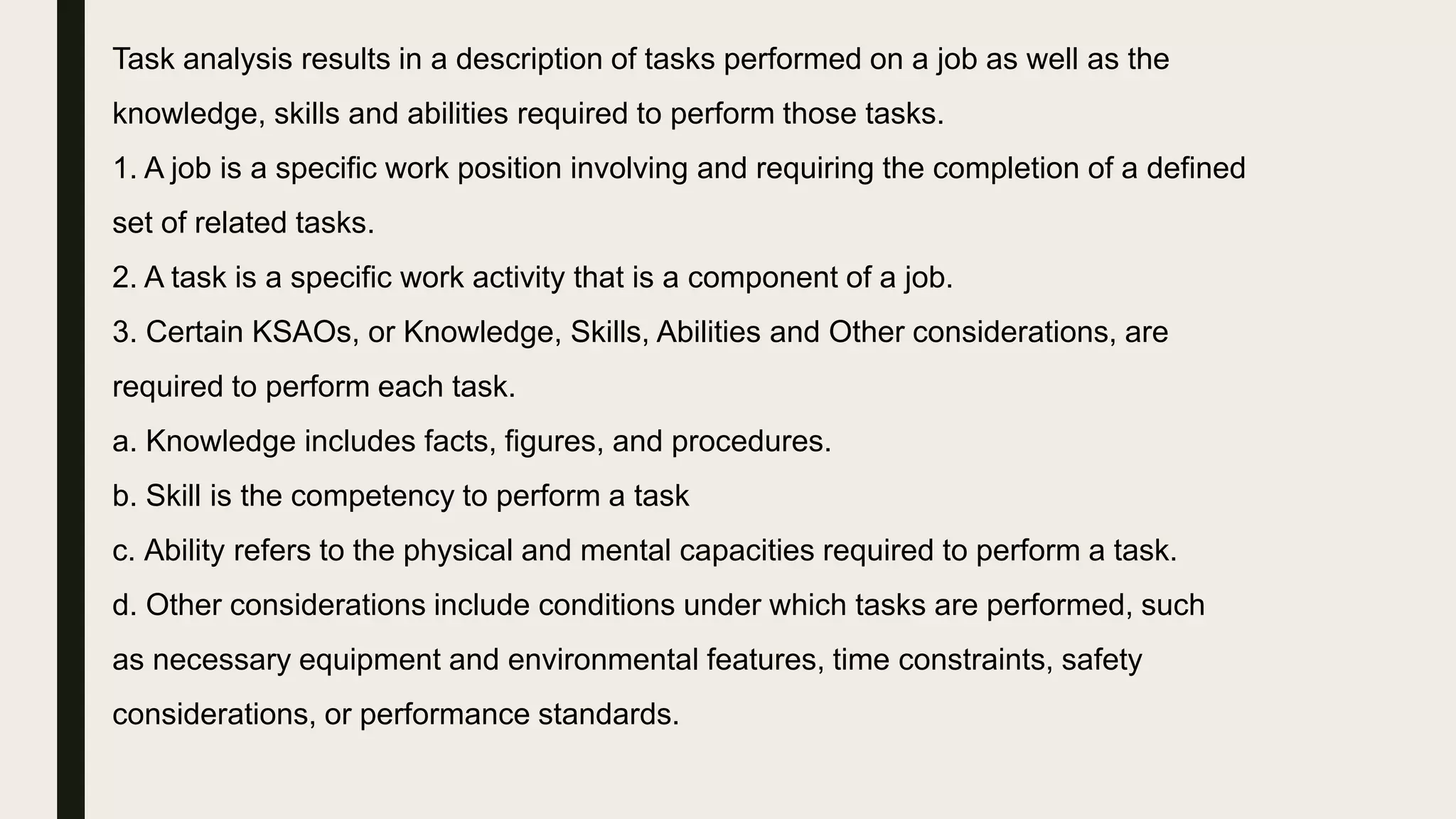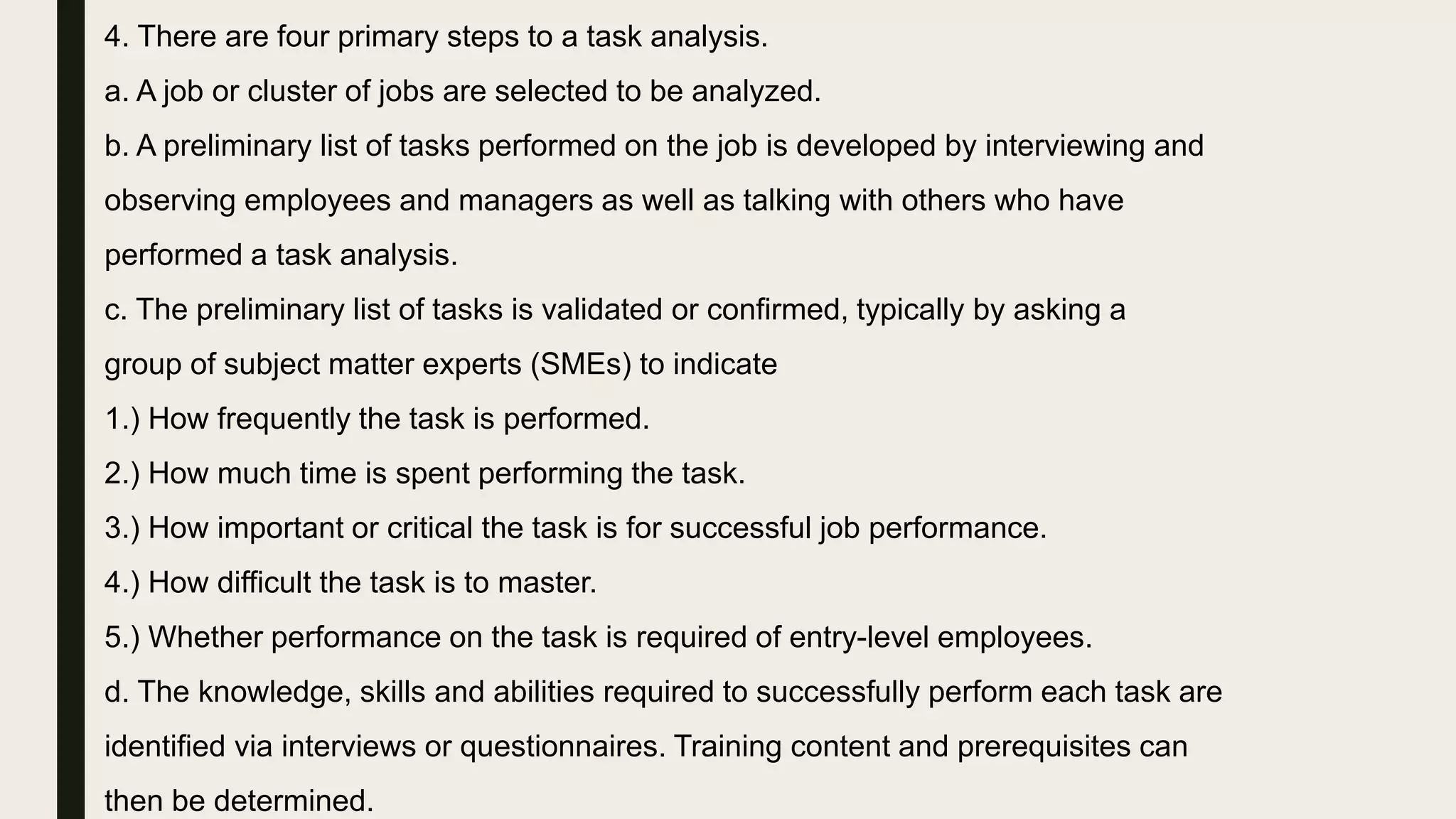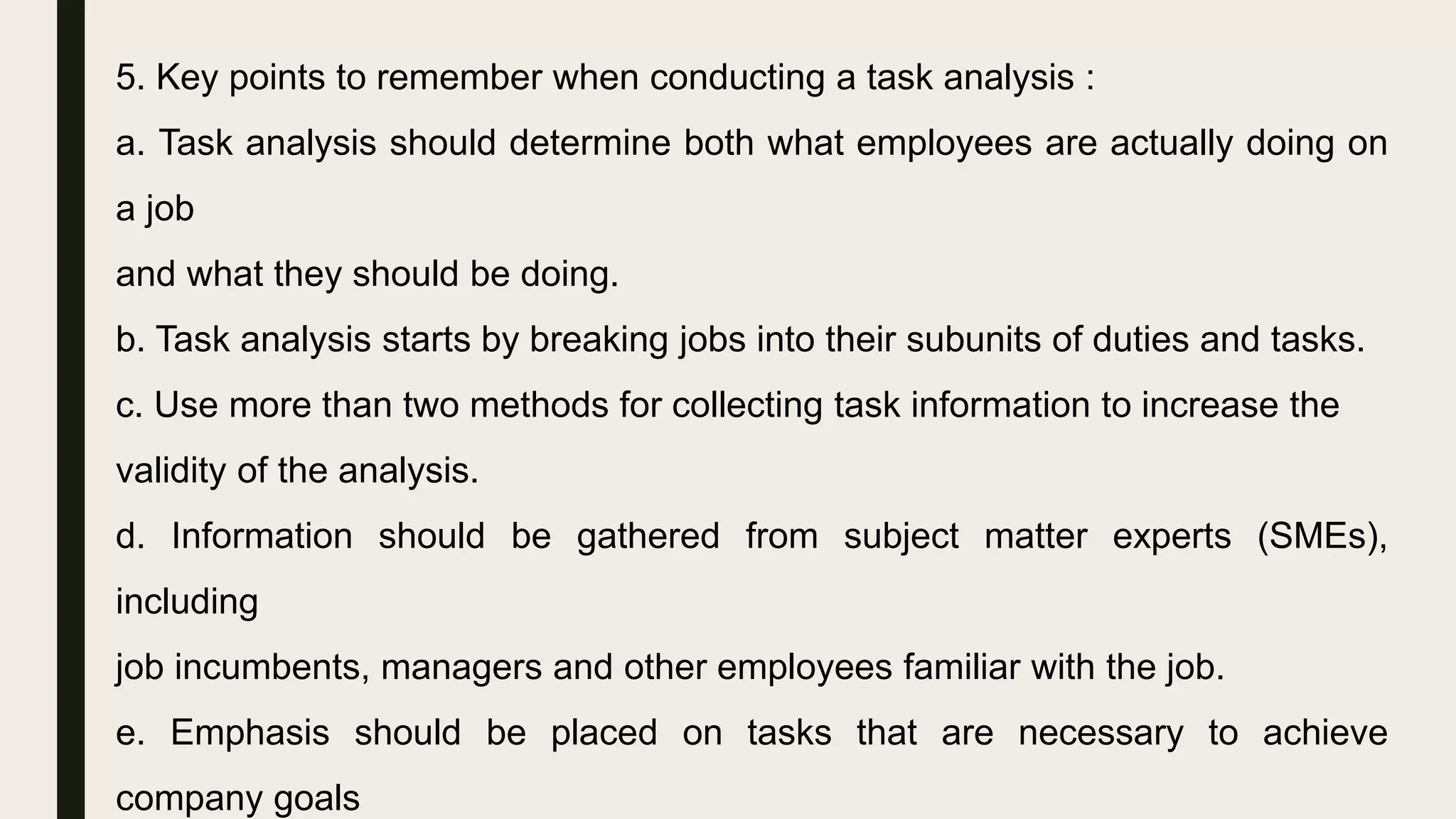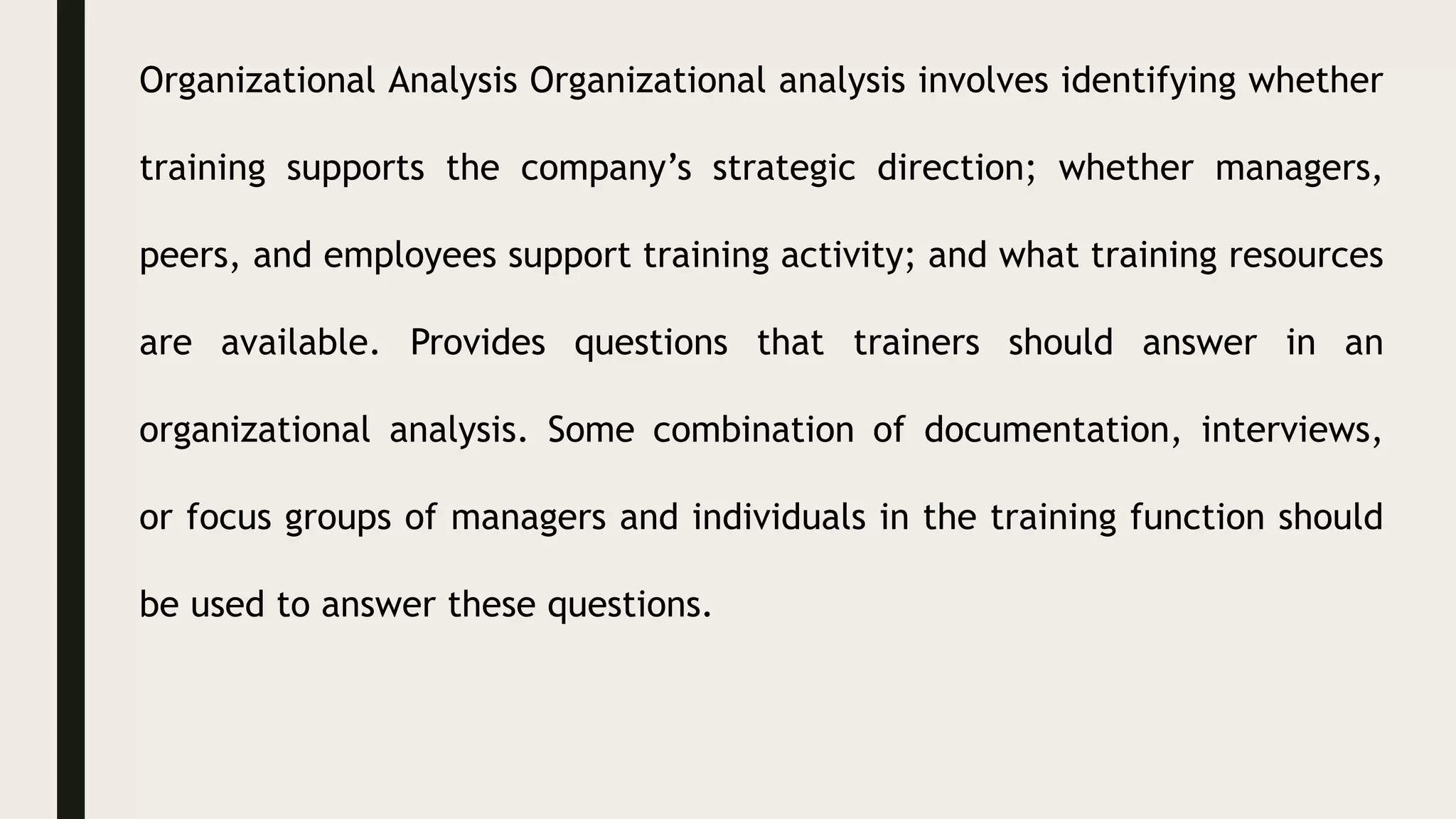Needs assessment is the first step of the instructional design process and is necessary to determine if training is needed, identify the correct content and objectives of training programs, and ensure training delivers expected results. It involves analyzing the organization, tasks, and individuals to understand performance gaps and training needs. The document outlines who should be involved in needs assessment including subject matter experts, and describes different needs assessment techniques like task analysis, person analysis, focus groups, and organizational analysis.
